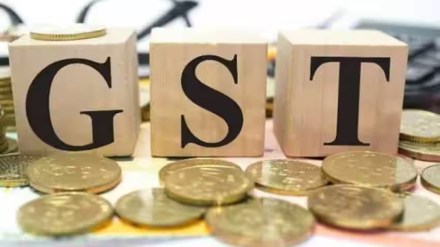– By Rajat Mohan
News on the Group of Ministers (GoM) on GST rate rationalization proposing a 35% GST slab for products like tobacco, tobacco products, and aerated drinks, along with creating sub-segmentations based on price points, has dampened economic sentiment in the country which is already grappling with declines in the stock market.
The introduction of the 35% GST slab could have ripple effects on other sectors. For example, products in luxury or indulgence categories, and non-essential goods with higher health or environmental burden like alcohol, processed foods and gaming, may face pressure for being included into the new slab. This could trigger future demands for reclassification or higher tax slabs for other goods, potentially expanding the complexity of the GST system.
While the finance minister and the Central Board of Indirect Taxes and Customs (CBIC) called these reports as “premature and speculative,” the development has sparked debate about the consistency of India’s tax regime. While the intent is to generate more revenue and promote public health, these changes could deter global investors from viewing India as a stable market.
GST Growth Without the Need for a Fifth Slab
India’s GST collections have shown impressive growth in recent years. Monthly GST revenues doubled between 2017-18 and 2023-24, reaching Rs 1.68 lakh crore, with an all-time high of Rs 2.10 lakh crore in April 2024. This success came after the government reduced the 28% GST slab from 224 items to 50 in 2017, simplifying the tax system for businesses. The decision to prune the highest tax slab made compliance easier and encouraged economic activity. Given the current strength of GST collections, introducing a new 35% slab risks undoing these gains.
The proposed fifth tax slab at 35% targets demerit goods, but it introduces unnecessary complexity into an already functioning GST structure. Sub-dividing product categories based on price points, under HSN codes, will add another layer of difficulty in classification. Businesses, particularly SMEs, could face increased compliance costs as they struggle to navigate these new distinctions. This complexity risks triggering classification disputes and slowing down the ease of doing business, particularly for those already burdened with the intricacies of multiple tax filings.
A higher tax rate could inadvertently encourage tax evasion or the growth of the black market, especially in India’s tobacco sector, which is now the world’s 4th largest illicit market because of high tax arbitrage. This is partly because, according to WHO reports, legal cigarettes in India have become the most unaffordable in the world basis the country’s per capita GDP.
Investor Confidence at Risk
International investors are drawn to tax environments that are stable and predictable. Frequent changes and the creation of new tax slabs signal unpredictability. With India’s economy already facing challenges such as slowing consumption, the timing of a 35% GST slab could harm investor confidence in the Indian market. The option to raise the tax slab further to 40% adds regulatory uncertainty, which undermines the stability businesses need for long-term planning. The cascading effects may include reduced job creation, slowed innovation, and a dampened business sentiment.
Countries with efficient tax systems, like Canada, Japan, and Singapore, maintain simplified VAT or GST structures with fewer tax slabs, making compliance easier for businesses. Canada, for instance, has a single VAT rate of 5%, while Japan and Singapore follow similarly straightforward models with rates of 10% and 9%, respectively. These systems minimize confusion, reduce administrative burdens, and promote tax compliance.
A Better Approach: Lower Indirect Taxes to Stimulate Growth
For India, adopting a streamlined approach would mean reducing the current four-slab GST system (5%, 12%, 18%, 28%) to three: 5% for essential goods, 12% or 15% for most products, and 28% for luxury or harmful goods like tobacco. This would help simplify the tax system, especially for small and medium enterprises (SMEs), improving business efficiency and encouraging compliance. Gradually phasing in these changes would also prevent disruptions in revenue. As seen from the past, lowering indirect taxes spurs demand, which, in turn, can generate higher tax collections in the long run. In a slowing economy, reducing GST rates, especially on consumer goods, could boost consumption and create a virtuous cycle of economic activity.
With GST collections already at record levels, there is no pressing need to introduce a 35% tax slab. Instead, the government should focus on making the tax system simpler and more efficient by lowering rates and consolidating existing slabs. Simplification, not multiplication, is the key to sustaining India’s economic growth.
(Rajat Mohan is Senior Partner at AMRG & Associates.)
(Disclaimer: Views expressed are personal and do not reflect the official position or policy of Financial Express Online. Reproducing this content without permission is prohibited.)
